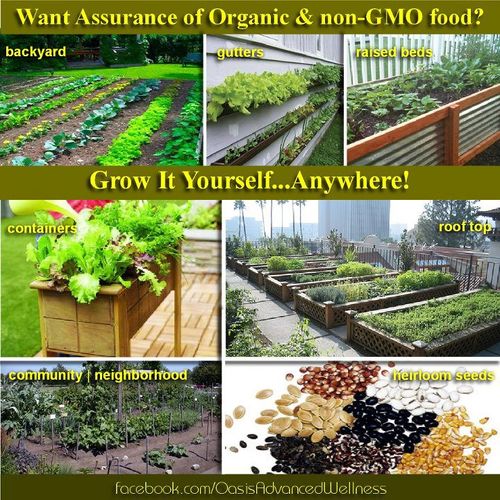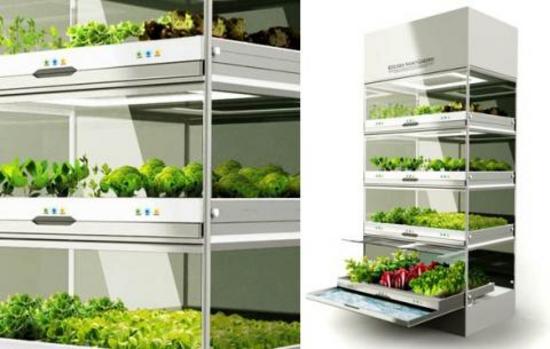Difference between revisions of "Agriculture"
(Agirculture Biblioteca Online - in Spanish) |
(fertilizantes) |
||
| Line 1: | Line 1: | ||
[[File:Grow your own.jpg|right|500px]] | [[File:Grow your own.jpg|right|500px]] | ||
| + | |||
| + | ==Fertilizers== | ||
| + | |||
| + | * Cocô de vaca seco: recolher o cocô seco no pasto, molhar e cobrir com lona. Aplicar nas m | ||
| + | udas quando estiver umedecido. | ||
| + | |||
| + | * Biofertilizante: | ||
| + | água | ||
| + | cocô de vaca fresco | ||
| + | cinzas | ||
| + | diversas espécies de mato forte triturado | ||
| + | |||
| + | Deixar em um balde por 15 dias, mexendo 2x por dia. | ||
| + | |||
| + | Acrescentar 1kg de açúcar e deixar por mais uma semana e então aplicar nas plantas. | ||
| + | |||
| + | Obs: jogue cascas de frutas e verduras para alimentar a cultura. | ||
| + | |||
| + | |||
== Companion plants == | == Companion plants == | ||
*[http://www.ghorganics.com/page2.html List of companion plants by ghorganics] | *[http://www.ghorganics.com/page2.html List of companion plants by ghorganics] | ||
Revision as of 23:02, 7 January 2013
Fertilizers
- Cocô de vaca seco: recolher o cocô seco no pasto, molhar e cobrir com lona. Aplicar nas m
udas quando estiver umedecido.
- Biofertilizante:
água cocô de vaca fresco cinzas diversas espécies de mato forte triturado
Deixar em um balde por 15 dias, mexendo 2x por dia.
Acrescentar 1kg de açúcar e deixar por mais uma semana e então aplicar nas plantas.
Obs: jogue cascas de frutas e verduras para alimentar a cultura.
Companion plants
Seedlings
- Como germinar sementes de maçã
- Cultivo de erva mate - Embrapa
- How to process tea
- General info about Camellia sinensis - Tea
Urban Growing
- PPatch Growing Communities
- Lettuce Link - information about sustainable urban community growing
- Urban Garden Share
- Edible Forest Gardens
- A Deliciously Resourceful Town Aims For Total Food Self-Sufficiency Within 7 Years
- Urban Aquaponics Garden
Pests and diseases
Permaculture
- Sepp Holzer - Permaculture Guru
- Natrual World - A Farm For The Future
- Visionaries: In Grave Danger of Falling Food
- Waste = Food
Agroforestry
Agroforestry is an integrated approach of using the interactive benefits from combining trees and shrubs with crops and/or livestock. It combines agricultural and forestry technologies to create more diverse, productive, profitable, healthy, and sustainable land-use systems.
- Wikipedia:Agroforestry
- World Agroforestry Centre
- Agroforestry Research Trust
- Beacon Food Forest - Seattle Creating Massive Edible Forest Filled with Free Food
- Establishing a food forest - short intro vid
A million pounds of food/year on 3 acres with aquaponics
Growing power seems to have a winning combo going. I underestimated what they are doing. Based on the information in these videos, IF true, then on 3 acres they are producing 1,000,000 pounds of food each year! How are they doing this? Well, based on the information given in the video...
10,000 fish 300-500 yards worm compost 3 acres of land in green houses Grow all year using heat from compost piles. Using vertical space
A packed greenhouse produces a crop value of $5 Square Foot! ($200,000/acre).
Now, just to be clear I am not growing power or will allen. Also, a pound of plant or fish product is not the same thing as eatable food unless you process all parts of them for food. i.e. eating the fish bones and using plant stalks in stews. Generally, nations that are well fed throw away most of the plant and eat only the best parts thus lowing the yield of food.
Growing power depends on and runs on the HUGE amounts of compost they make from food waste that is taken from the city. With out this compost there would be no heat for the greenhouses and no fuel for the plants to grow. Its a great thing to divert this from the landfill and provide cheap food for the community.
My personal experience is that growing 7 pounds of food per square foot in a year is not that hard to do especially if you grow year around. You have to select plants that produce a lot of food in a small space which means you may not get a nutritionally complete diet if thats all you grow. Also layering of growth to use all space is important.
I personally use a 12 foot diameter round pond 2.5 feet deep to grow annually 300+ pounds of fish in an aquaponic system and the bulk of my produce is grow using the biointensive method, in the ground, which is watered from the nitrogen rich fish water. My typical yield is between 6 and 9 pounds of food per square foot per year. This does require that I grow over winter which most people do not do. I find that growing in fall and winter months I actually get more production over fall and winter because there are NO bug problems! The crops do mature much slower, but they will mature! Think of it this way, the standard planted row may have 2 or 3 rows of veggies. Bio intensive will plant 12 rows; thats already 4 times the produce. Now add in onions, for example, that grow vertically above sweet potato vines, this increases production a lot. Now add to that 4 harvest per year vs the standard one season growing season. Now you have X4 more productivity. This brings us to X4X4 or 16 times the productivity of the standard growing methods. If you add to that hanging pot or what ever to add more growing space you have again increased productivity again. I personally have not used vertical space in that way. An snap shot of my experience is growing one sweat potato per 1.5' x 1.5' area (2.25 square feet) this one plant produces on average 12 pounds of root per plant and in that space I grow 4 to 6 leeks adding a pond of produce. Now, the vines grow all over the place, and I tie some up, are not confined to that 2.25 square feet of soil space. From each plant you can easily average 3 pounds of eatable leaves as you pick them over the growing season. At this point alone I am averaging 16 pounds of eatable food in 2.25 square feet or 16/2.5=7 pounds of food per square foot. Now that is in ONE GROWING SEASON. As I also grow fava beans, wheat, and fodder greens for two more seasons so my yelid is averaging 8 to 10 pounds in a year. IF I did this on 3 acres of growing space, excluding foot paths and green house walls ect then my production would be 8 pounds per square foot * 43560 feet acre * 3 = 1,045,440 pounds of food. It is possible to get even more by choosing the right crops and getting 4 harvest per year. I have settled on 4000 square feet of growing space per person for providing pretty much all the food a person needs. I suggest anyone starting out begin with a very small garden and do it well. Something like a 5' by 20' growing bed would be the most you would start with.
SUGGESTED READING:
- backyardaquaponics [dot] com/forum
- Food Now by bountiful gardens
- One Mexican Diet by bountiful gardens
- Four Season Harvest by Eliot Coleman
- Winter Harvest Handbook by Eliot Coleman
See also
- First flat in Brazil
- Our garden
- Waste
- Building fertile soil
- Green manure
- HowToCompost.org
- 10 tips for making better compost
- How to make ethanol from compost
- 10 tips for companion planting for natural pest control and organic sustainability
- Companion planting, List of companion plants
- Beneficial weeds, List of beneficial weeds
- Beneficial insects
- Permaculture Now!
- Raised garden introduction
- Open Source Ecology
- Farm Hack
- ApproPedia
- Agirculture Biblioteca Online - in Spanish









